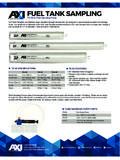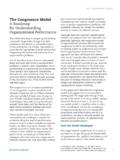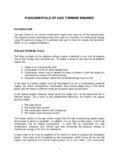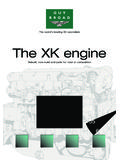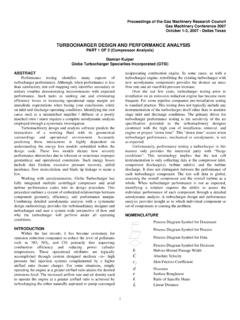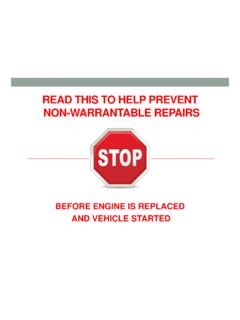Transcription of Guide #1 Understanding Diesel Fuel Problems
1 IntroductionThere has always been a need for fuel the good-old-days, people bought Diesel fuel foruse in a vehicle, marine vessel or equipment, andnever had a second thought about what was goingon inside their fuel tank. Marine applications weremore susceptible to Problems with degraded dieselfuel than most uses due to the ease at which watertended to get into tanks, a result of waves lappingup onto a boat, from the lack of tight-fitting tankcaps, or from condensation a result of moistureentering through tank vents. As these boats wereoften used seasonally, Diesel stored on-board forlong periods would degrade or becomecontaminated from microbial or bacterialinfestation.
2 As is often the case in generatorsystems kept for emergency power, fuel would bestored for years with only occasional fuel systemproblems the result of clogged filters, often at themost inopportune time. Commercially availableadditives that claim to kill the bugs or stabilize the fuel would, to an extent, address thesymptomsthatpointed to fuel Problems : black, slimy, clogged filters and lots of smoky exhaust. Often the problemswould come back as treating the symptoms did not solve the problem . But generally most people thatused Diesel fuel on a regular basis seldom had Low Sulfur DieselSince 2006, government mandates have forced a major change in the amount of sulfur in Diesel fuel (ultra-low-sulfur Diesel , or ULSD), a precedent to additional steps to lowering emissions of particulatematter from Diesel engines.
3 ULSD provides less energy, leading to lower fuel economy, and requiresmore costly crude oil resulting in changes to the refining process. The refining process necessary toachieve these standards also reduces the fuel s lubricating properties by removing naturally-occurringlubricity agents in Diesel Problems have become more widespread as all marine, rail locomotive and non-road applicationshaved move to ULSD as mandated by 2014. The ULSD enables emission control technologies that wererequired on marine Diesel engines in 2014 and for locomotives in in the Refining ProcessEfforts to refine crude oil utilizing hydrocracking processes that provide ULSD while maintaining orimproving the yield of fuels from a barrel of crude oil results in higher asphaltenes (the heavy asphalt Guide #1 Understanding Diesel fuel ProblemsDistributed By:Pecuniary, , NCToll Free: 877-826-7645 Email: of the crude oil) not being maintained in solution over time.
4 This results in stored dieselbecoming dark, either brown or black, evidenced by the accumulation of a tar-like substance on thebottom of fuel storage FuelsIn addition to accelerated degradation of Diesel fuel from the change to ULSD, increased use of biodieselblending with petrodiesel presents other Problems when related to long-term storage. Biodiesel maycontain small but problematic quantities of water. Water being present in fuel not only reduces the heatof combustion, resulting in more smoke and less power, but it also contributes to corrosion in fuelsystem components and provides habitat in storage tanks for microbes (bacteria).
5 The reproductionprocess of the microbes results in slimy materials that float in the fuel (hence the common, but erroneousreference to algae in contaminated fuel ) and produce acids that cause paper fuel filters to becomeclogged or fail and engine injectors and other components tocorrode, further resulting in damage or failure to engine fuelsystem systems that attempt to address water Problems that causeincreased fuel gelling in colder temperatures by heating thefuel have been found to aggravate the water problem in otherseasons by causing condensation of the moisture drawn intothe tank through vents, resulting in more water.
6 fuel pickuplines in the storage tank are typically one to several inches offthe bottom of a tank, so water accumulates over a long periodof time before becoming apparent. Sudden agitation, such asadding fuel or moving equipment that has sat for an extended period, stirs up the accumulated debris andwater sometimes causing total fuel system failure, or, at a minimum, clogged filters and the Contamination gets into the TankMicrobial contamination can be introduced to the fuel tank in a number of ways. A fuel supplier,distributor or filling station may have a contaminated storage tank. Contaminants may also be drawn inthrough tank vents as fuel is used from a tank and replaced with air.
7 Bio- Diesel contains water and willseparate from the petro- Diesel /bio- Diesel mixture. Typically, the reproduction by the microbes requireseveral months to develop to the point that the byproduct slime and residue is noticable, fuel filtersbecome clogged, degredated engine performance becomes evident, or other discernable symptoms offuel contamination the problem , Not Just the SymptomsThere are a number of symptoms that you may experience indicating that you have a fuel systemproblem:Clogged and Slimy manufacturer of the dieselengine may recommend you change your filter at 15,000miles, or, in the case of equipment where operating hoursare the standard of measure, 300 hours (or some otherinterval).
8 You should have acceptable performance up tothat point. If, however, you find your engine performancebegins to suffer at some fraction of that time (5,000 miles,or 50 hours) and changing the filter seems to solve theproblem, then you have a potential fuel problem . If the 2 fuel filter is black, has course material on the outside of the filter media, and maybe coveredwith a slimy material, than you have a definite fuel and Hazy fuel is the result of water that has entered the tank becoming emulsifiedinto the fuel . Slight to moderate hazy fuel will not pose lasting Problems , but severely hazy fuelcan adversely impact performance, damage fuel filters, and cause damage to build up in the , the heaviest constituents of crude oil, is in Diesel fuel , but isin solution and is not apparent from a visual inspection of good fuel .
9 Degraded fuel turns darkas the asphaltene component sticks together and grows in size, becoming visible as dark fueland, as the asphaltene component gains weight, it sinks to the tank bottom and accumulates as acoating of what looks like roofing tar. Also, bio-sludge, from microbial (bacteria)contamination that resides in the water in the tank bottom, creates a byproduct of slime as theyreproduce. Attempting to treat this symptom by using a biocide additive will convert this bio-slime into a solid, resulting in a gritty particulate accumulation in the tank bottom that oftenaggravates the core of Power and RPM, and Corroded, Pitted flow being reduced by clogged andslimy filters, the degradation of the Diesel fuel that compromises the combustibility of the fuel ,and the sulphate reducing bacterial contamination that creates acids that corrode injectors andreduce lubricity.
10 All contribute to the compromise of engine components and compromiseefficient engine Smoke and Soot from fuel causes a drop in the cetane number ofthe fuel , resulting in shorter combustion times for each cycle of the engine, and compromisedengine injectors result in substandard spray patterns, all resulting in incomplete fuel result is a visible increase in black smoke (unspent fuel ) and soot being expelled from theexhaust and higher levels of soot being apparent in engine oil analysis tests. Soot in the motoroil shortens the oil s effective life and increases engine component Odor from your fuel the above results in a foul rotten eggs odor emanating fromthe fuel t make the mistake of treating the symptom.

